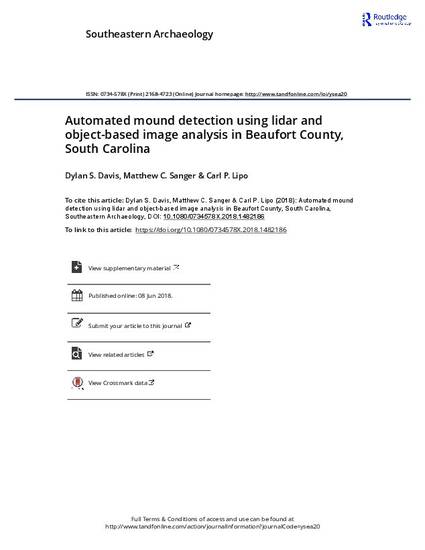
- remote sensing,
- OBIA,
- LiDAR,
- statistical template matching
The study of prehistoric anthropogenic mounded features– earthen mounds, shell heaps, and shell rings – in the American Southeast is stymied by the spotty distribution of systematic surveys across the region. Many extant, yet unidentified, archaeological mound features continue to evade detection due to the heavily forested canopies that occupy large areas of the region, making pedestrian surveys difficult and preventing aerial observation. The use of object-based image analysis (OBIA) as a tool for analysing light detection and ranging (LiDAR) data, however, offers an inexpensive opportunity to address this challenge. Using publicly available LiDAR data from Beaufort County, South Carolina and an OBIA approach that incorporates morphometric classification and statistical template matching, we systematically identify over 150 previously undetected archaeological mound features. This result improves our overall knowledge of settlement patterns by providing a systematic knowledge about prehistoric landscapes.
Available at: http://works.bepress.com/carl-lipo/8/

Attached are data associated with the publication. These template files were produced in eCognition for the use in our OBIA analyses of the Beau County, SC LiDAR data.